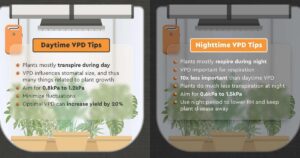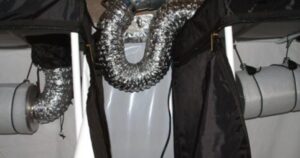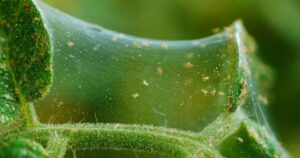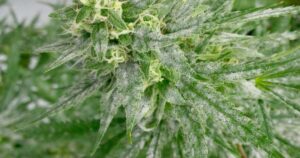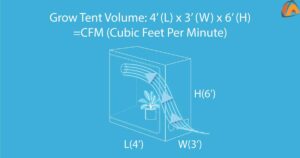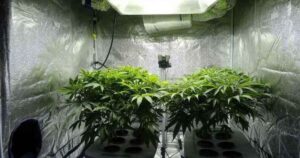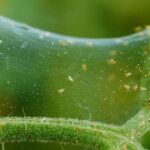Clean a grow tent after hermie refers to the process of thoroughly cleaning and sanitizing a cannabis cultivation space after a hermaphroditic (hermie) plant has been identified and removed. This is crucial to prevent the accidental pollination of other plants, as hermies possess both male and female reproductive organs, leading to the release of pollen that can fertilize nearby females.
Curious about how to clean grow tent after hermie? Learn the essential steps to safeguard your cannabis crop from unintended pollination and maximize your yields. Dive into our guide to discover actionable tips and best practices that will help you navigate the post-hermie cleanup process with confidence.
In our comprehensive guide on clean grow tent after hermie, we explore the step-by-step process of cleaning and disinfecting your grow tent after encountering a hermaphroditic plant. Our article aims to empower growers with the knowledge and tools necessary to maintain a pest-free, contamination-free environment, ensuring the success of their cultivation endeavors.
Identifying and Removing Hermie Plants from Your Grow Tent
In the quest for a thriving indoor garden, identifying and removing hermaphrodite (hermie) plants from your grow tent is crucial for ensuring a robust and high-quality yield. Hermie plants, which develop both male and female reproductive organs, can jeopardize the overall health of your cannabis crop by pollinating the females and producing seeds.
To effectively tackle this issue, it’s essential to recognize the early signs of hermaphroditism and promptly eliminate affected plants. Keep a keen eye out for the appearance of pollen sacs alongside buds, as this is a telltale indication of hermaphroditic traits. Regular monitoring and a proactive approach are key to preventing pollination and preserving the potency of your harvest.
Thorough Cleaning Techniques for Hermie Residue in Grow Tent
Ensuring a clean and healthy environment for your plants is crucial for a successful indoor gardening experience. When it comes to maintaining a grow tent, thorough cleaning techniques for hermie residue are essential. Hermie residue, or hermaphrodite plant material, can hinder the growth and overall well-being of your crops. To tackle this issue, start by removing any visible residue manually.
Next, employ a mild cleaning solution, such as a mixture of water and vinegar, to wipe down surfaces and eliminate lingering traces. Regularly inspect and clean equipment like lights, fans, and trays to prevent any potential contamination. Additionally, consider implementing a cleaning schedule to stay proactive in warding off hermie-related challenges. A clean grow tent not only promotes plant health but also contributes to a more productive and vibrant indoor garden.
Sanitizing Grow Tent Equipment to Prevent Hermie Recurrence

Ensuring the cleanliness of your grow tent equipment is crucial in preventing the recurrence of hermaphroditic (hermie) plants. To maintain a healthy and thriving crop, it’s essential to regularly sanitize your grow tent tools and accessories. Cleaning your equipment helps eliminate any residual pollen, pests, or contaminants that may lead to hermie development.
Start by thoroughly cleaning and disinfecting your grow lights, trays, pots, and any other equipment used in your cultivation space. Consider using a mild, non-toxic cleaning solution to avoid any harmful residue. A systematic approach to sanitization significantly reduces the risk of hermie plants, allowing you to cultivate a more stable and productive crop.
Regular maintenance and cleanliness should be a fundamental part of your growing routine to promote a flourishing and consistent harvest.
Choosing the Right Cleaning Agents for Hermaphrodite Contamination
Selecting the appropriate cleaning agents when dealing with hermaphrodite contamination is crucial for maintaining a safe and healthy environment. Hermaphrodite contamination poses unique challenges that require specialized cleaning solutions to ensure effective and thorough sanitation.
It’s essential to consider factors such as the type of surface, the severity of contamination, and the specific hermaphroditic organisms involved. Using the wrong cleaning agents may not only be ineffective but could potentially exacerbate the issue. Common cleaning agents like bleach, hydrogen peroxide, and disinfectant sprays may prove useful, but consulting with experts or referring to a comprehensive guide can help tailor the choice of cleaning agents to the specific contamination scenario.
Understanding preventive measures and adopting a regular cleaning routine can significantly reduce the risk of hermaphrodite contamination in the first place.
Preventive Measures for Maintaining a Hermie-Free Grow Environment
In order to cultivate a healthy and thriving growth environment, it is crucial to implement preventive measures to keep hermaphroditic (hermie) plants at bay. Hermies, or plants displaying both male and female reproductive parts, can jeopardize the quality of your harvest. To avoid this issue, focus on creating optimal conditions for your plants.
Firstly, ensure proper lighting schedules, as irregular light exposure can stress plants and trigger hermaphroditism. Secondly, maintain stable temperatures and humidity levels, as fluctuations can disrupt plant development. Thirdly, invest in quality seeds from reputable sources to reduce the risk of hermaphroditic traits.
Perform regular inspections of your plants to promptly identify and remove any potential hermies. By adopting these preventive measures, you can safeguard your grow environment and maximize the yield of healthy, high-quality crops.
Ensuring Optimal Conditions for Future Crop Growth After Hermie Cleanup
In the wake of the successful cleanup efforts to mitigate the impact of Hermie, it is imperative to shift our focus towards creating ideal conditions for future crop growth. Our collective efforts in restoring the environment must now transition into cultivating fertile grounds for sustainable agriculture. To achieve this, we are implementing a comprehensive strategy that encompasses soil enrichment, water conservation, and biodiversity restoration.
Nutrient-rich soil amendments will be introduced to revitalize the land, ensuring it is primed for robust plant development. Furthermore, water management practices will be optimized to enhance irrigation efficiency and minimize wastage. Emphasizing the importance of biodiversity, we aim to reintroduce a variety of beneficial organisms to create a balanced ecosystem that fosters natural pest control and soil health.
FAQs
Conclusion
Effectively cleaning a grow tent after a hermaphrodite (hermie) incident is crucial to maintain a healthy and productive cultivation environment. Thoroughly sanitize all surfaces, eliminate any traces of pollen, and consider implementing preventive measures to avoid future occurrences. Regular maintenance and attention to cleanliness will contribute to the success of your grow operation and the overall well-being of your plants.

